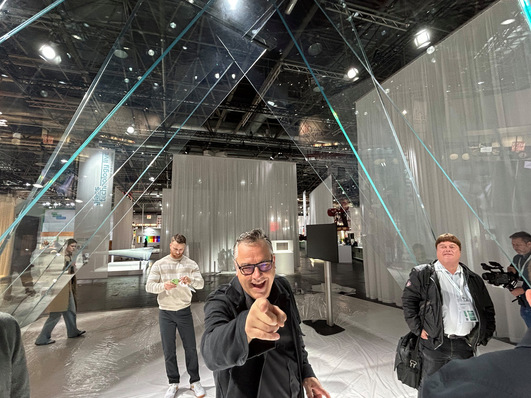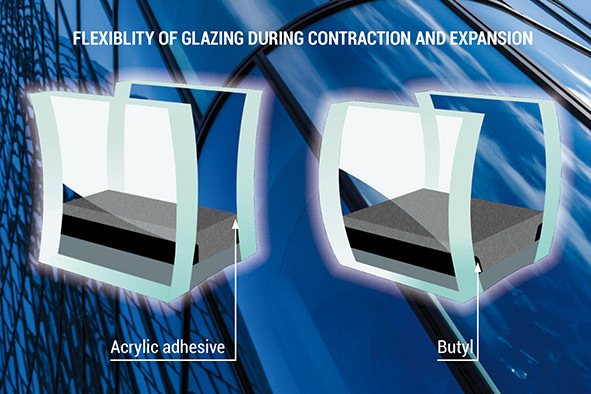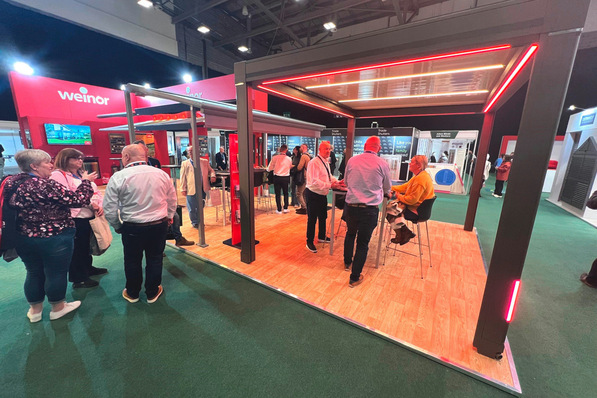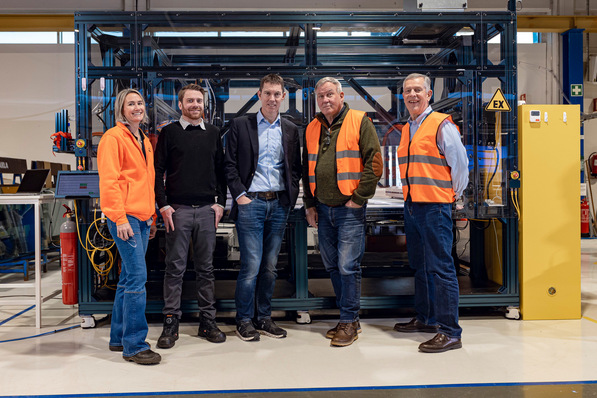The reduction of carbon emissions is currently the big issue in architecture, in the glass and facade industry as well as in the supplier industries. And this is not surprising, because a large part of CO2 emissions comes from building consumption, and float production and glass processing also consume very large amounts of energy, which in turn generates CO2.
See here some other impressions from the Glass Performance Days 2023
The good news is that not only can old and new buildings be energy-optimised with the help of glass, but the glass industry is also finding new ways and possibilities to reduce energy consumption in production and processing. And it is successful in doing so.
At GPD 2023 in the Nokia Arena in Tampere, for example, not only were many lectures about CO2 reduction, but exhibitors also presented new, CO2-reduced and CO2-neutral products.
Christoph Timm, Director at Skidmore, Owings & Merrill (SOM), explained how the carbon issue is being taken up by architects. The service life of a building had to be extended in order to improve its CO2 balance. At the same time, the upgrade of building components and building elements during refurbishment had to be simplified, said Christoph Timm. And further: "We tend to look at the carbon embedded in buildings or its components at the beginning and end of the life cycle, while the operational carbon is the most important. Therefore, we need to stop adding more and more to the building. Instead, we need lighter systems and simplified structures, this includes glass facades and glass products. We believe that by using multi-use concepts and reducing wherever possible, we can significantly reduce the carbon footprint of a building."

Matthias Rehberger / GW
See also: AGC increases capacity to offer CO2-reduced glass
Timm presented the results of an analysis of glass facades in the Los Angeles region. The result showed that there, in the temperate climate region, a simple, fully glazed facade was able to achieve the best results in terms of cost, carbon footprint and daylighting, even compared to the latest high-tech facades.
Christoph Timm went on to ask: "How can we reduce the total carbon consumption of a building as well as that of a city and maximise carbon absorption?"
The answer: by extending the life of buildings, and by turning buildings into "dynamic organisms".
To this end, he introduced the concept of the "Urban Sequoia Tree" developed by SOM. This is an approach to smart buildings with solar PV panels on the roof and energy-generating facades and PV glass parapets, which also sequester maximum CO2.
"Glass is the hidden jewel of the carbon-neutral future"
The presentation by Bertrand Cazes, Secretary General of Glass for Europe, was also exciting: "The carbon issue is challenging the glass industry to push its limits. But how?"
His answer: "Glass is the hidden jewel of the CO2-neutral future, because we, the glass industry are part of the solution to implement energy-autonomous and CO2-optimised buildings and facades. Today we already have low-carbon glass. Now we are moving to convert the float glass process."
Unfortunately, we don't currently have the energy to produce "carbon-free glass". But that will come, says Bertrand Cazes.
Also interesting: Glaston announces plans to restructure
"Our goal must be to develop CO2-optimised manufacturing processes that enable the glass industry to produce the same or better products as before with less carbon input. Then we will succeed."
Where will the recycled glass be coming from?
Another topic of discussion was the use of recycled glass, which in turn improves the carbon footprint of the glass industry. One of the challenges is that the amount of raw material currently needed for flat glass production can only be covered by recycled glass to a maximum of 25%. The industry must find new ways to increase this amount.
The speakers, the exhibitors and also the discussions with and among the visitors reflected the trends around glass, its processing and new products very well. And with this, the GPD has once again proven that it is the most important glass conference in the world.
Matthias Rehberger



















